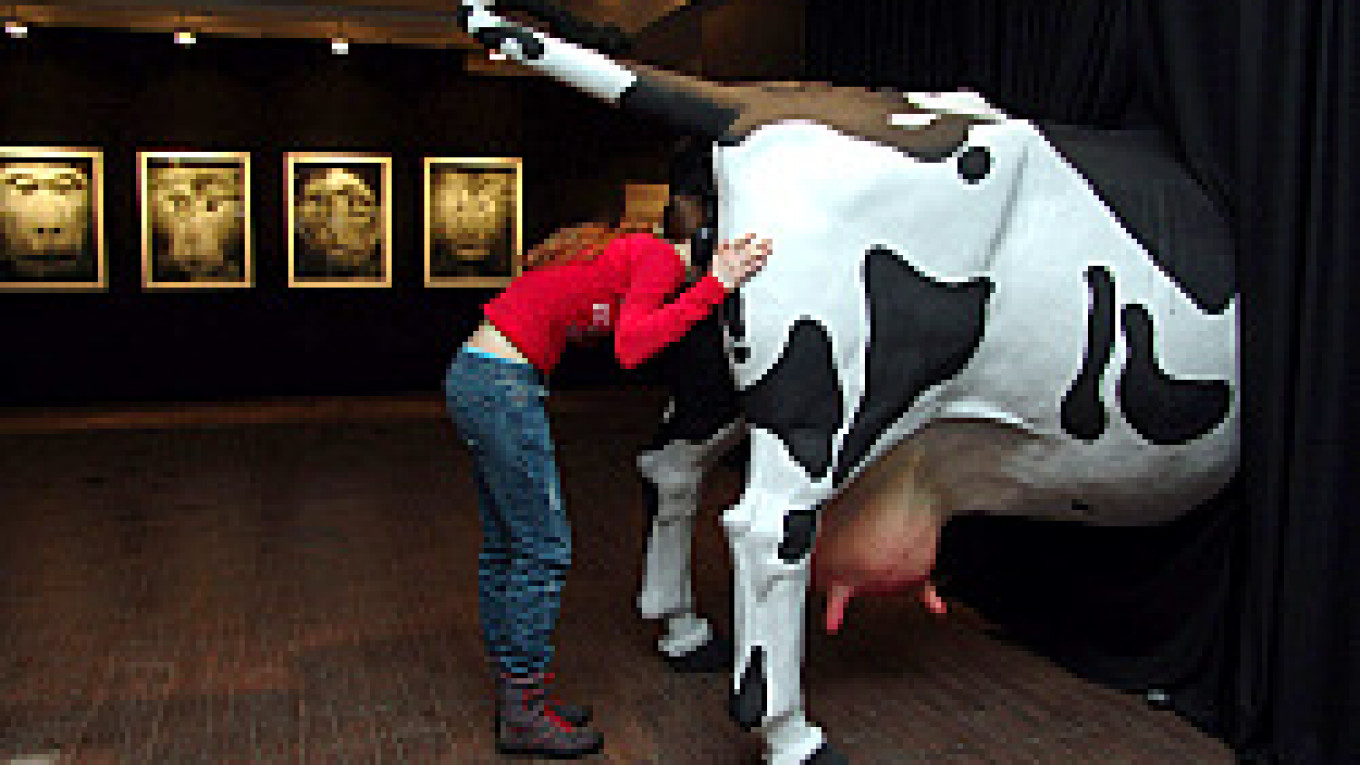Video art differs from films created for purely entertainment or documentary purposes, said exhibition curator Antonio Geusa, in that it "is not a commercial form of art. It is 'freedom island.' It is the territory of sheer experimentation and is more audience-oriented -- especially video installation and interactive video installations -- than other genres."
The three-part exhibition aims to familiarize visitors with the evolution of local video art from the earliest days of its conception to its situation today. Volume 1 opened in January 2007, presenting video art from its beginnings in 1985 to 1999. Volume 2, running May 3, presents the period of acceptance of video as an art form (1995 to 2005). Volume 3 will open in 2010 and cover the previous ten years.
"The pioneers of Russian video art had to overcome many obstacles -- equipment was very difficult to get and expensive, no spaces where to show their works. After the collapse of the Soviet Union in December 1991, things became much easier," said Geusa, "For example, the first independent contemporary art galleries opened in Moscow. They offered technical and financial help. And, most importantly, an exhibition space."
The current installation consists of a set of 40 works, each focusing on various authors who contributed to the development of "video as an art practice in Russia."
Upon entering, guests are greeted by a Oleg Kulik installation of a spotted Holstein cow's rear end, into which they are encouraged to stick their heads. Doing so reveals a video of a naked gentleman ballroom dancing with a finely dressed 'madam' superimposed over scenes of cows and farm life.
As one ascends the stairs, the walls are covered with pictures of various absurd themes. Kulik's "I Love Europe, But He Doesn't Love Me," for instance, consists of six shots of Kulik, naked and wearing a black dog collar, barking at various large dogs while bending over on all fours next to the flag of the European Union. Further on, AES+F's piece "Who Wants to Live Forever" portrays a seemingly well-to-do blonde, dressed in a slinky black dress and pearl necklace, smiling somewhat seductively in various positions on a removed car seat. What's shocking is the blood streaming from her knees, head and arms.
Videos are presented in a wide variety of formats and contain a wide range of subjects. "Apocrypha," for instance, is a single-stream video projected onto the wall of a small enclave, depicting the results of the artist throwing his camera up into the Church of Holy Sepulchre in Jerusalem and then slowing the video down. The group TOTART's piece, on the other hand, entitled "The Foucault's Pendulum," is a multi-stream video shown through five different television screens, which are stacked on different levels of boxes. The screens alternate, revealing a dog wearing headphones, a microphone and spinning neon blue forms.
The subject material is endless: "stand-up" dolls rocking back and forth, children draped in white escaping the mystical 'King of the Forest,' an interactive mask construction that allows guests to stick their hands in and pretend to be bestialized directors and one X-rated film temptingly hidden behind a black curtain.
Despite the name of the exhibition, those expecting a history lesson will certainly be disappointed, for there is no clear explanation of the development of video as an art form. Entertainment, however, is certainly on the agenda -- a virtual sensory feast for the visitor's indulgence.
"The History of Russian Video Art, Vol. 2" is at the Moscow Museum of Modern Art until May 3. 17 Yermolayevsky Pereulok. Metro Mayakovskaya. www.mmoma.ru. Tel. 694-2890.
A Message from The Moscow Times:
Dear readers,
We are facing unprecedented challenges. Russia's Prosecutor General's Office has designated The Moscow Times as an "undesirable" organization, criminalizing our work and putting our staff at risk of prosecution. This follows our earlier unjust labeling as a "foreign agent."
These actions are direct attempts to silence independent journalism in Russia. The authorities claim our work "discredits the decisions of the Russian leadership." We see things differently: we strive to provide accurate, unbiased reporting on Russia.
We, the journalists of The Moscow Times, refuse to be silenced. But to continue our work, we need your help.
Your support, no matter how small, makes a world of difference. If you can, please support us monthly starting from just $2. It's quick to set up, and every contribution makes a significant impact.
By supporting The Moscow Times, you're defending open, independent journalism in the face of repression. Thank you for standing with us.
Remind me later.


